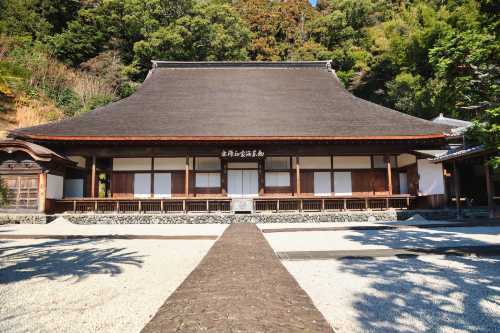App
Customer Support
Find Bookings
Popular Trip Moments
Hotel Wing International Shizuoka | [Japan 🇯🇵] Chibi Maruko Chan Land: Step into a Retro Anime Dream in Shizuoka! | Shizuoka Izu Shimoda Hydrangea Season - A June Exclusive Attraction | 🌊You can see Mt. Fuji and hear the sound of the waves at the same time! The secret place of Miho no Matsubara is revealed⛰️ | Shizuoka: The Perfect Weekend Escape for Relaxation! 🍵🌸 | Miho Beach – Mount Fuji, Black Sand, and Serene Pine Trees | The Ultimate 3-Day 2-Night Shizuoka Travel Guide! Enjoy to the Max for Just ¥1k per Person! | [Shizuoka Prefecture, Ito, Spend some time relaxing in Ito] | Shizuoka 3D2N|A Healing Paradise Next to Tokyo | Nippon Daira Hotel: Nihondaira Twin Room with Mount Fuji View | 【First Flight Special】Qingdao⇋Shizuoka Direct Flight Launches Grandly on July 17th! ¥750 Round Trip | HACHI&MITSU - A Stylish and Delicious Café at Sunpu Takumi Shuku in Shizuoka | 【Shizuoka】 Sugigi - The brand beef "Shizuoka Sodachi" is absolutely delicious - | Recommended Japanese city for quietly enjoying Mount Fuji | A Warm Meal in Shizuoka | The World's Richest Matcha Ice Cream & Wasabi Delights! | The dream of alcohol lovers, "drinking at a fish shop" has become a reality! Shizuoka City Okitsu [Drinking Fish Shop Uotoku] Denakin 🍶 | [Okitsu Post Town] (Shizuoka City, Shizuoka Prefecture, former province name: Suruga) | [Shizuoka🇯🇵] A relaxing weekend trip plan for Shizuoka | [Shizuoka Prefecture] Japan's No. 1 Mount Fuji🗻 | Sashimi in Shimizu, Tokyo Suburbs - A Cut Above Tsukiji | 🌄 Hidden Tourist Attractions Shizuoka Travel, Japan's Hidden Gem! | 🇯🇵Shizuoka Stay at the artistic Hotel NoirBlanc🍷Unlimited drinking is so crazy! ) | Spring Vibes & Juice Break at Sunpu Castle Run and Refresh Station | Spring Coffee Break on the Terrace | mishima skywalk | [Japan 🇯🇵] Shizuoka Food Guide: Delicious Delights Beyond Mount Fuji! | Hattasan Soneiji Temple – A Serene Mountain Retreat in Fukuroi | Kakegawa Castle – A Beautiful Glimpse into Feudal Japan
Recommended Attractions at Popular Destinations
Popular Attractions in Bangkok | Popular Attractions in Manila | Popular Attractions in Tokyo | Popular Attractions in Taipei | Popular Attractions in Hong Kong | Popular Attractions in Seoul | Popular Attractions in Kuala Lumpur | Popular Attractions in Los Angeles | Popular Attractions in Shanghai | Popular Attractions in New York | Popular Attractions in Shenzhen | Popular Attractions in Osaka | Popular Attractions in Singapore | Popular Attractions in London | Popular Attractions in Guangzhou | Popular Attractions in San Francisco | Popular Attractions in Beijing | Popular Attractions in Macau | Popular Attractions in Bali | Popular Attractions in Jakarta | Popular Attractions in Paris | Popular Attractions in Ho Chi Minh City | Popular Attractions in Istanbul | Popular Attractions in Phuket | Popular Attractions in Chicago | Popular Attractions in Seattle | Popular Attractions in Toronto | Popular Attractions in Orlando | Popular Attractions in Cebu | Popular Attractions in Chiang Mai
Popular Restaurants in Shizuoka
Grill & Bar Restaurant the Crossroads | Sangria, Takajo | サングリア 久能店 | Shiki | All Day Dining The Terrace | Chojiya | Togakushi Soba Honten | Tsuruya | Nihonryourikarin | DINING LOUNGE & BAR ARBOR/Nakajimaya Grand Hotel | Osteria Porta Porta | Hama no Kakiageya | Simples | SUMIBI FRENCH SINQ | Linka | Binchoh Ogiya Shizuoka SBS Tohriten | Kodona | SMILE Shimizuten | Gongben he'anzhishidian | Sawayaka Shizuoka Ikeda | Quil Fait Bon Shizuoka | Kawakyo | Nakotei | La Avenir | No’age concentre | Teppanyakikeyaki | TSUTANO | Abekawa-no Hotori Shiki-no Sachi Edokoma | Huusuiju | Pergola
Popular Ranked Lists
Popular Best Things to Do in Jiamusi | Popular Trending Attractions in Dunhuang | Popular Luxury Hotels Near Slupski | Popular Trending Attractions in Osaka | Top 50 Must-Visit Restaurants in Zhuhai | Top 10 Trending Attractions in Bali | Top 50 Must-Visit Restaurants in Florence | Top 50 Must-Visit Restaurants in Berlin | Top 20 Luxury Hotels near Madinet Al Bayadeyah | Popular Trending Attractions in Qingdao | Top 10 Trending Attractions in Weihai | Top 50 Must-Visit Restaurants in Koh Samui | Top 50 Must-Visit Restaurants in Chongqing | Top 10 Trending Attractions in Harbin | Popular Luxury Hotels Near Port Macquarie | Popular Trending Attractions in Nanjing | Popular Best Things to Do in Langfang | Popular Premium Hotels in Alameda County | Top 10 Premium Hotels near Motung | Top 10 Luxury Hotels near Fishers | Top 10 Luxury Hotels near Calasiao | Top 20 Luxury Hotels near Rutherford | Popular Trending Attractions in Singapore | Top 10 Trending Attractions in Hong Kong | Top 50 Must-Visit Restaurants in San Francisco | Top 50 Must-Visit Restaurants in New York | Popular Luxury Hotels Near Alexandroupolis | Top 50 Must-Visit Restaurants in Nha Trang | Popular Trending Attractions in Dujiangyan | Top 10 Best Things to Do in Luzhou
About
Payment Methods
Our Partners
Copyright © 2025 Trip.com Travel Singapore Pte. Ltd. All rights reserved
Site Operator: Trip.com Travel Singapore Pte. Ltd.
Site Operator: Trip.com Travel Singapore Pte. Ltd.






















